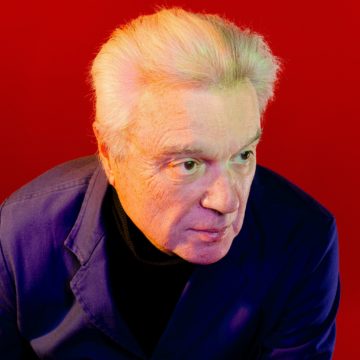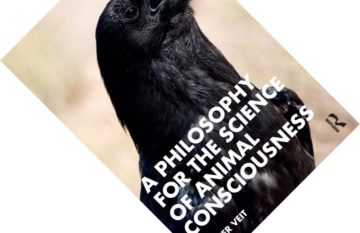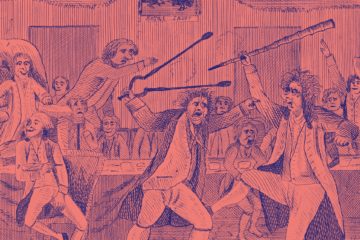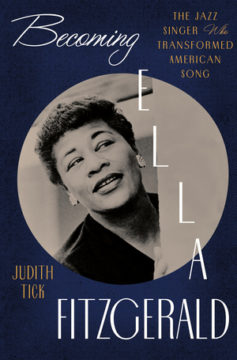Chris Knight in Aeon:
 When I first came across Chomsky’s linguistic work, my reactions resembled those of an anthropologist attempting to fathom the beliefs of a previously uncontacted tribe. For anyone in that position, the first rule is to put aside one’s own cultural prejudices and assumptions in order to avoid dismissing every unfamiliar belief. The doctrines encountered may seem unusual, but there are always compelling reasons why those particular doctrines are the ones people adhere to. The task of the anthropologist is to delve into the local context, history, politics and culture of the people under study – in the hope that this may shed light on the logic of those ideas.
When I first came across Chomsky’s linguistic work, my reactions resembled those of an anthropologist attempting to fathom the beliefs of a previously uncontacted tribe. For anyone in that position, the first rule is to put aside one’s own cultural prejudices and assumptions in order to avoid dismissing every unfamiliar belief. The doctrines encountered may seem unusual, but there are always compelling reasons why those particular doctrines are the ones people adhere to. The task of the anthropologist is to delve into the local context, history, politics and culture of the people under study – in the hope that this may shed light on the logic of those ideas.
The tribe shaping Chomsky’s linguistics, I quickly discovered, was a community of computer scientists during the early years of the Cold War, employed to enhance electronic systems of command and control for nuclear war and other military operations. My book Decoding Chomsky (2016) was an attempt to explain the ever-changing intricacies of Chomskyan linguistics within this specific cultural and historical setting.
More here.

 When we think about the food we ate when we were younger, we might be inclined to say that it was tastier and healthier than what we eat today. And while we may be saying this out of a nostalgic tendency, researchers have been looking for a more scientific answer. In several papers, researchers have used food tables – country-by-country compendia of historical information on the mineral composition of foods – to report an apparent decline in micronutrients such as iron, vitamins and zinc in fruit and vegetables over time.
When we think about the food we ate when we were younger, we might be inclined to say that it was tastier and healthier than what we eat today. And while we may be saying this out of a nostalgic tendency, researchers have been looking for a more scientific answer. In several papers, researchers have used food tables – country-by-country compendia of historical information on the mineral composition of foods – to report an apparent decline in micronutrients such as iron, vitamins and zinc in fruit and vegetables over time. Construction of the mosque-cathedral of Córdoba began in the late 8th century under the first Umayyad emir of Córdoba, ʿAbd al-Raḥmān I, and then later expanded several times during the 9th and 10th centuries. From its inception, the mosque—with its red-and-white-striped arches—was built to resemble the Great Mosque of Damascus, on the other side of the Mediterranean. But the mosque went through a more local transformation in the 16th century, by which point Catholic Spain had driven out the Muslims who had inhabited the south for seven centuries. Now, the mosque was renovated into a cathedral, with a large transept and choir added to its center. Seeing the Christian addition to the nearly thousand-year-old structure, Emperor Charles V allegedly remarked: The architect has taken something extraordinary and made it ordinary.
Construction of the mosque-cathedral of Córdoba began in the late 8th century under the first Umayyad emir of Córdoba, ʿAbd al-Raḥmān I, and then later expanded several times during the 9th and 10th centuries. From its inception, the mosque—with its red-and-white-striped arches—was built to resemble the Great Mosque of Damascus, on the other side of the Mediterranean. But the mosque went through a more local transformation in the 16th century, by which point Catholic Spain had driven out the Muslims who had inhabited the south for seven centuries. Now, the mosque was renovated into a cathedral, with a large transept and choir added to its center. Seeing the Christian addition to the nearly thousand-year-old structure, Emperor Charles V allegedly remarked: The architect has taken something extraordinary and made it ordinary. Every year is probably an interesting one for an artist as restless and inquisitive as David Byrne, but I’m willing to bet that 2023 was especially so. In September, a newly restored edition of “Stop Making Sense,” the landmark 1984 concert film by Byrne’s former band, Talking Heads, returned to theaters to much (richly deserved) ballyhoo. Before that, “Here Lies Love,” a musical based on the life of the former Philippine first lady Imelda Marcos, began a five-month run on Broadway. That show featured lyrics by Byrne and music written by him and Fatboy Slim, and was staged in such a way that a regular old theater was transformed into a shape-shifting disco. The film is a rock concert as joyous celebration of community; the musical a seductive portrait of power’s distorting effects. “Rather than be told this is what the world can be like,’’ says Byrne, 71, about his work, “it’s kind of like, ‘We’re going to show to you how things could be.’ ”
Every year is probably an interesting one for an artist as restless and inquisitive as David Byrne, but I’m willing to bet that 2023 was especially so. In September, a newly restored edition of “Stop Making Sense,” the landmark 1984 concert film by Byrne’s former band, Talking Heads, returned to theaters to much (richly deserved) ballyhoo. Before that, “Here Lies Love,” a musical based on the life of the former Philippine first lady Imelda Marcos, began a five-month run on Broadway. That show featured lyrics by Byrne and music written by him and Fatboy Slim, and was staged in such a way that a regular old theater was transformed into a shape-shifting disco. The film is a rock concert as joyous celebration of community; the musical a seductive portrait of power’s distorting effects. “Rather than be told this is what the world can be like,’’ says Byrne, 71, about his work, “it’s kind of like, ‘We’re going to show to you how things could be.’ ” DUMMERSTORF, GERMANY
DUMMERSTORF, GERMANY Writing in 2005, Andrew Delbanco observed, in his critical biography Melville: His World and Work, that the author of Moby-Dick “seems to renew himself for each new generation.” Since the mid-twentieth century, Delbanco notes, “there has been a steady stream of new Melvilles, all of whom seem somehow able to keep up with the preoccupations of the moment.” He lists a few:
Writing in 2005, Andrew Delbanco observed, in his critical biography Melville: His World and Work, that the author of Moby-Dick “seems to renew himself for each new generation.” Since the mid-twentieth century, Delbanco notes, “there has been a steady stream of new Melvilles, all of whom seem somehow able to keep up with the preoccupations of the moment.” He lists a few: The nature of consciousness is one of the hardest problems in biology. What exactly is it? Where did it come from? And are non-human animals conscious? Philosophers and scientists range from ascribing consciousness to all life (biopsychism), or even all matter (panpsychism), to attributing it exclusively to humans. Seemingly beyond the purview of empirical science due to its subjective nature, there is a lack of “intuitively attractive solutions” (p. xiii). In the opinion of Walter Veit, an assistant professor in philosophy, that just will not do. In this slim but advanced-level book, he outlines a mightily interesting thesis of how consciousness could have gradually evolved, which aspect of it likely appeared first, and why we urgently need to step away from taking human consciousness as our yardstick.
The nature of consciousness is one of the hardest problems in biology. What exactly is it? Where did it come from? And are non-human animals conscious? Philosophers and scientists range from ascribing consciousness to all life (biopsychism), or even all matter (panpsychism), to attributing it exclusively to humans. Seemingly beyond the purview of empirical science due to its subjective nature, there is a lack of “intuitively attractive solutions” (p. xiii). In the opinion of Walter Veit, an assistant professor in philosophy, that just will not do. In this slim but advanced-level book, he outlines a mightily interesting thesis of how consciousness could have gradually evolved, which aspect of it likely appeared first, and why we urgently need to step away from taking human consciousness as our yardstick. Danielle Allen’s Justice by Means of Democracy represents a major, and much-needed, shift in perspective. In the book, she locates the work of establishing justice not in the philosophy seminar room but in real-world discussions with diverse, everyday people: “talking with strangers” with intention to co-create a more democratic and more just society together. Fifty years on from Rawls’s foundational A Theory of Justice, Allen has set out to articulate not simply a new theory of justice but a new way of thinking about justice: one that trades Rawls’s abstract thought experiments for real-life ones. And equally importantly, it offers us the concrete tools for getting from thinking about to practicing democracy, however imperfectly, in messy situations in which the needs and future prospects of real people are concretely implicated.
Danielle Allen’s Justice by Means of Democracy represents a major, and much-needed, shift in perspective. In the book, she locates the work of establishing justice not in the philosophy seminar room but in real-world discussions with diverse, everyday people: “talking with strangers” with intention to co-create a more democratic and more just society together. Fifty years on from Rawls’s foundational A Theory of Justice, Allen has set out to articulate not simply a new theory of justice but a new way of thinking about justice: one that trades Rawls’s abstract thought experiments for real-life ones. And equally importantly, it offers us the concrete tools for getting from thinking about to practicing democracy, however imperfectly, in messy situations in which the needs and future prospects of real people are concretely implicated. It’s one of the great mysteries of music history, as high in the ranks as “Who wrote the Renaissance lover’s tribute ‘Greensleeves’” and “How did
It’s one of the great mysteries of music history, as high in the ranks as “Who wrote the Renaissance lover’s tribute ‘Greensleeves’” and “How did  Coffee
Coffee Quillette: In Enlightenment Now, you discuss the importance of “norms and institutions that channel parochial interests into universal benefits.” Jonathan Haidt says the nation is the largest unit that activates the tribal mind, whereas Peter Singer says we are on an “escalator of reason” that allows our circle of moral concern to keep expanding. What would you say are the limits of human solidarity?
Quillette: In Enlightenment Now, you discuss the importance of “norms and institutions that channel parochial interests into universal benefits.” Jonathan Haidt says the nation is the largest unit that activates the tribal mind, whereas Peter Singer says we are on an “escalator of reason” that allows our circle of moral concern to keep expanding. What would you say are the limits of human solidarity? The title of “
The title of “ Much of “Zero at the Bone” is set a long way from Yale: in the hot, flat, scrubby towns of Texas where Wiman grew up, the apparent golden child of a deeply tarnished family, “my father vanishing, my mother wracked with rage and faith, my siblings sinking into drugs and alcohol, my own mind burning at night like an oil fire on water.” (He mentions only briefly an opiate addiction of his own, and spends maybe a little too much time recapping an abandoned bildungsroman in service of the theory that God is a failed novelist “who seems conflicted about how — or whether — to finish us.”)
Much of “Zero at the Bone” is set a long way from Yale: in the hot, flat, scrubby towns of Texas where Wiman grew up, the apparent golden child of a deeply tarnished family, “my father vanishing, my mother wracked with rage and faith, my siblings sinking into drugs and alcohol, my own mind burning at night like an oil fire on water.” (He mentions only briefly an opiate addiction of his own, and spends maybe a little too much time recapping an abandoned bildungsroman in service of the theory that God is a failed novelist “who seems conflicted about how — or whether — to finish us.”) In seventeen years it will be the 200
In seventeen years it will be the 200